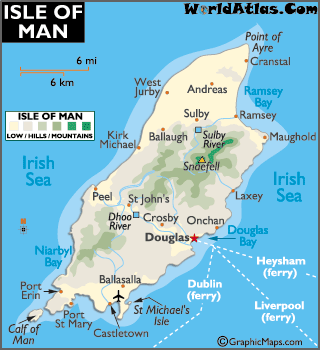Manx Judge and Manx Fairies, 1932 April 24, 2015
Author: Beach Combing | in : Contemporary , trackbackWe have noted previously here the spectacle of the fairies in a law court in nineteenth-century Ireland. However, this one came surprisingly late (11 March 1932 the report) and from the Isle of Man. The Deemster is a Manx judge:
The unusual spectacle of Manx Deemster, or law-giver, weighing up the evidence for and against the universal belief fairies, has just been witnessed at Aeglagh Vanmn, the Manx League of Youth, which is making efforts to revive the national traditions of the Isle of Man. The Deemster, who himself holds one of the oldest and most interesting traditional offices on an island famous for its wealth of ancient customs and institutions, treated his subject in perfectly serious and scientific manner, tracing the fairy tradition from the early Celtic gods, deities of fire and battle and of the sea through the invasions and conflicts of various later races such as the Norsemen with their sturdy traditions, to the folklore of the present day. He spoke of Brigit, or Bride, one of the early fire deities and later a Christian saint, in memory of whose rites the gorse on the Manx Mountains are still set afire on St. Bride’s Day and of the Tuatha de Danaan, the race Irish gods who were believed to dwell within the hills. Mananan, god of the sea. was the most popular and powerful of these, and his dwelling was Falga, the island Elysium, which Celtic scholars have identified with the Isle of Man…
So far this is all fairly respectable ‘Celtic mythology’, though Beach has not come across Falga in his reading.
The Deemster then passed to modern traditions of fairy hills, fairy rings, within which the ‘good people’ had been seen dancing, fairy arrows, changelings and various types of bugganes’ (spooks) and fairy animals.
This is all again rather anodyne, but now there is an interesting extract.
The belief in changelings was very common, he said, and even in these days certain people were sometimes pointed out by old countryfolk as having been ‘changed’ in childhood; in fact, when he was small, whenever his nurse was annoyed with him she used to tell him that one day she went out leaving a fine healthy baby behind, and on her return she found ‘the cross, little miserable little craythure that ye are now and have been ever since.’
This kind of changeling material is surprising this late in a Celtic area. In Cornwall, for example, serious changeling belief apparently died out in the mid nineteenth century. The Deemster shies away from any final judgement. He admits that he knows of ‘sane, descent, shrewd men’ who have seen fairies. But he hedges his bets saying that he is unable to come to a conclusion, though he does come out with some guff about racial memory. What is not explained in this article in the Nottingham Evening Post is why the Deemster was pronouncing in the first place. At one point he mentions his ‘paper’ and he was talking at the Manx League of Youth. Perhaps then this was simply a talk given in a legal style? Still an overlooked fairy source for Manx history.
1 May 2015: Ivo writes in ‘In the Manx Judge and Manx Fairies, 1932 from April the 24th you said you have not come across Falga in your reading. Falga and Manannan appear in Gods and Fighting Men by Lady Gregory (Pt I, Bk IV, 1904): “And some say Culain, the Smith, that gave his name to Cuchulain afterwards, was Manannan himself, for he had many shapes. Anyway, before Culain came to Ulster, he was living in the Island of Falga, that was one of Manannan’s places. And one time before Conchubar came into the kingdom, he went to ask advice of a Druid, and the Druid bade him to go to the Island of Falga and to ask Culain, the smith he would find there, to make arms for him. So Conchubar did so, and the smith promised to make a sword and spear and shield for him.” http://www.sacred-texts.com/neu/celt/gafm/gafm18.htm



